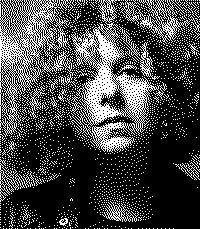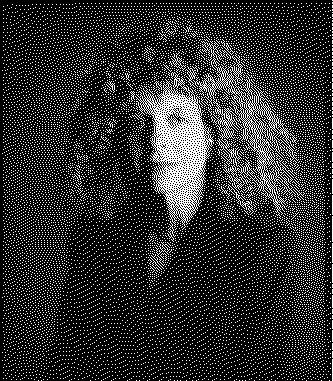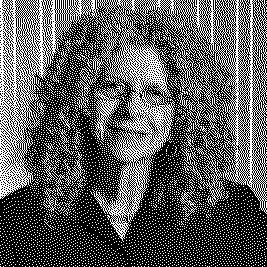Artists/Barbara Kruger
Fast Facts
Photomontage and Typography
Kruger is best known for her black-and-white photomontages overlaid with declarative captions in white-on-red Futura Bold Oblique or Helvetica Ultra Condensed text. These works often deliver provocative messages about culture, consumerism, and identity.
Critique of Consumer Culture and Power Structures
Her art critically examines societal norms and the power dynamics of consumer culture, feminism, and identity politics. She addresses issues such as sexism, materialism, and manipulation in mass media and advertising
Famous Phrases
One of her most iconic phrases is "I shop therefore I am," which critiques consumerism and the commodification of identity. Her work often includes pronouns like "you," "your," "I," "we," and "they" to directly engage with the viewer
Large-scale Installations and Public Art
Beyond gallery exhibitions, Kruger's work includes large-scale installations, public billboards, and digital media. Her art is often displayed in public spaces to reach a broad audience
Use of Found Images
Many of her works incorporate found images from magazines and other media sources, which she recontextualizes with her text overlays to create new, critical meanings
Biography



Barbara Kruger, born on January 26, 1945, in Newark, New Jersey, is a prominent American artist known for her impactful work that challenges cultural assumptions through the manipulation of images and text.
Kruger's journey into the world of art and design began after her high school education in Newark, leading her to Syracuse University and then to Parsons School of Design in New York City, where she was under the tutelage of notable figures such as Diane Arbus and Marvin Israel. Her early career saw her excelling in the field of graphic design, notably becoming the chief designer at Mademoiselle magazine at a young age (Encyclopedia Britannica) (The Art Story).
Despite her success in the design world, Kruger felt compelled to pursue a career in art, driven by a desire for a more profound form of expression. She transitioned from focusing on weaving and painting to photography and eventually to her signature style of photomontage, combining images with provocative texts. This shift was influenced by her experiences and the feminist movement of the 1970s, marking a radical change in her work from decorative elements to a more confrontational and message-driven approach (Smithsonian American Art Museum) (The Broad).
Kruger's art is distinguished by its direct engagement with viewers, utilizing a combination of found images and bold, declarative captions that critique social dynamics, consumerism, and identity politics. Her work often features monochrome images overlaid with phrases in striking fonts, a style influenced by her background in magazine editorial design. This technique allows her to explore the power of language and images in shaping identity and societal norms (Wikipedia) (The Broad).
Throughout her career, Kruger has not only created visually compelling pieces but has also engaged in various forms of artistic expression, including video, audio works, and public projects. Her art extends beyond the gallery space, impacting public discourse and challenging viewers to question the world around them. Her famous works, such as "Your body is a battleground" and "I shop therefore I am," encapsulate her critique of consumer culture and the commodification of the self (The Broad).
Today, Barbara Kruger continues to be a vital voice in contemporary art, residing and working in New York City and Los Angeles. Her legacy is one of challenging viewers to reflect on their positions within the cultural and political landscapes, using her art as a means to provoke thought and inspire change (Smithsonian American Art Museum).
Importance
Barbara Kruger is a pivotal figure in contemporary art, known for her powerful critique of society, culture, and politics through the interplay of text and image. Her significance as an artist lies in several key aspects of her work and its impact on both art and society.
Innovative Use of Text and Image
Kruger's background in graphic design profoundly influenced her artistic approach, leading to the creation of works that combine bold textual messages with striking imagery. This blend of visual and verbal language has become her signature style, allowing her to address complex themes such as identity, power, consumerism, and feminism in an accessible yet provocative manner (The Art Story) (Homepage).
Feminist Perspective
From the outset, Kruger's art has been feminist in its approach, directly engaging with issues related to gender, identity, and the female body. Her works, such as "Your Body is a Battleground," not only highlight the struggles surrounding women's rights and autonomy but have also served as rallying cries for feminist movements. Kruger's ability to encapsulate the essence of feminist concerns in succinct, impactful phrases has cemented her role as a key figure in feminist art (TheCollector) (Homepage).
Critique of Consumerism and Capitalism
Kruger’s critique extends beyond gender politics to encompass broader societal issues, particularly the dynamics of consumer culture and capitalism. Through works like "I shop therefore I am," she exposes the manipulative tactics of advertising and the superficiality of consumerism. Her art prompts viewers to reflect on their role within these systems, challenging them to reconsider their values and behaviors in the face of relentless consumer pressures (TheCollector) (Homepage).
Public Engagement and Accessibility
Kruger's work transcends the traditional boundaries of the art world, reaching a wide audience through public installations, magazine covers, and even billboards. This approach not only democratizes access to her art but also integrates her critique into the very fabric of the public spaces and media channels that she often questions. Her use of public spaces as canvases for her art blurs the lines between the gallery and the street, making her commentary a part of everyday life (TheCollector).
Continued Relevance and Impact
Barbara Kruger’s art remains profoundly relevant, addressing issues that are as pressing today as they were when she first emerged on the art scene. Her work continues to inspire new generations of artists and activists, serving as a reminder of the power of art to challenge, question, and provoke. Kruger's influence extends beyond her visual creations, through her critical writings and her role as an educator, further amplifying her impact on the discourse surrounding art, culture, and society (The Art Story) (Smithsonian Magazine) (Homepage).
Technique
Morris Louis' artistic technique revolutionized the way paint and canvas interact, marking a significant departure from traditional methods and contributing to the evolution of Color Field painting.
Photomontage
Kruger combines black-and-white photographs with bold, declarative text. This technique allows her to juxtapose images and words to create powerful messages about societal issues (The Museum of Modern Art) (Wikipedia).
Appropriation and Alteration
She frequently appropriates and alters existing images from mass media, overlaying them with her own provocative text to critique cultural norms and ideologies (Wikipedia).
Bold Text
Kruger uses white-on-red Futura Bold Oblique or Helvetica Ultra Condensed text for her phrases. This distinctive style helps her messages stand out and become instantly recognizable (Wikipedia).
Themes
Her phrases often include pronouns such as "you," "your," "I," "we," and "they," addressing themes of power, identity, consumerism, and sexuality. These themes are central to her critique of societal structures and norms (Wikipedia).
Graphic Design Influence
Kruger's background in graphic design, particularly her work for magazines, informs her style. This experience taught her the importance of engaging visuals and concise messaging, which she incorporates into her art to make strong sociopolitical statements (The Museum of Modern Art).
Large-Scale Installations
Kruger extends her technique to large-scale installations that transform architectural spaces. These installations often create immersive environments that compel viewers to confront the messages and question the power dynamics at play in society (The Museum of Modern Art) (Smithsonian Magazine).
Photolithography and Screen Printing
She utilizes these techniques to reproduce her works on a wide scale, democratizing access to her art. This method allows her to create works on various mediums, from matchbooks to billboards (The Museum of Modern Art).
Interdisciplinary Approach
Kruger also incorporates video, audio, and oversized sculptures into her work, expanding her repertoire beyond traditional media. This interdisciplinary approach helps her reach broader audiences and convey her messages through multiple formats (The Museum of Modern Art).





